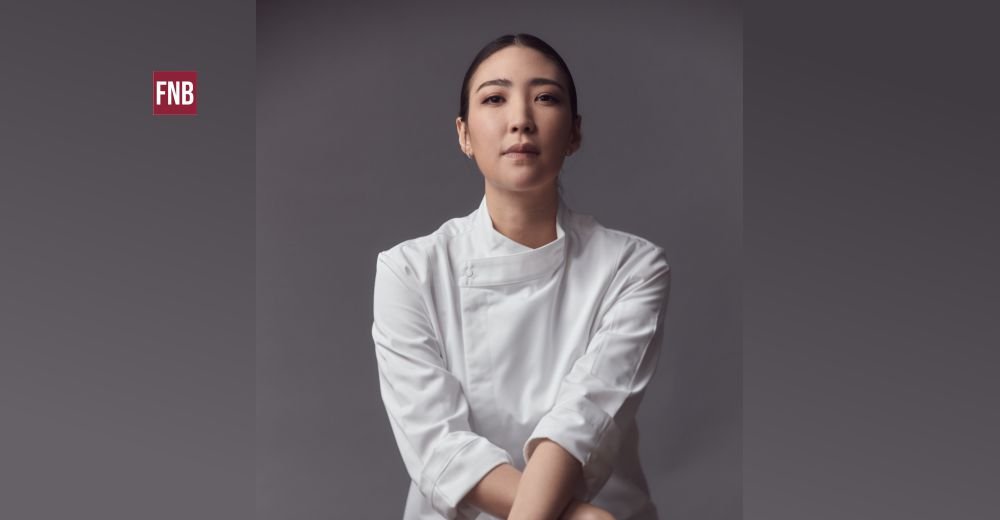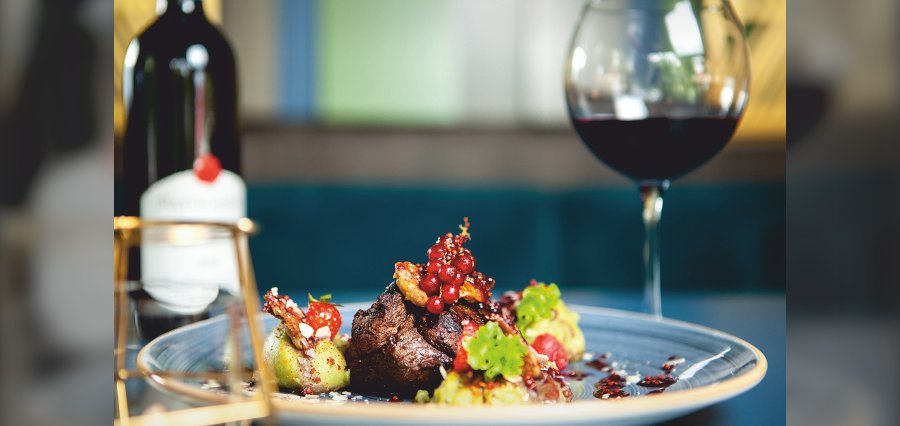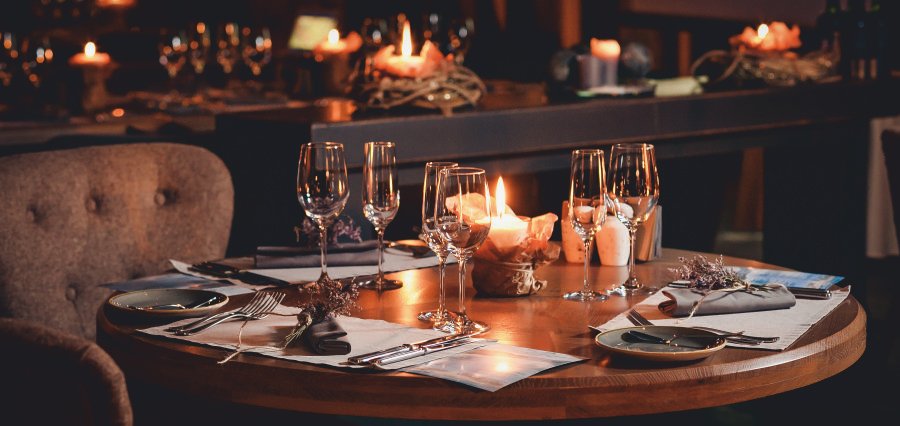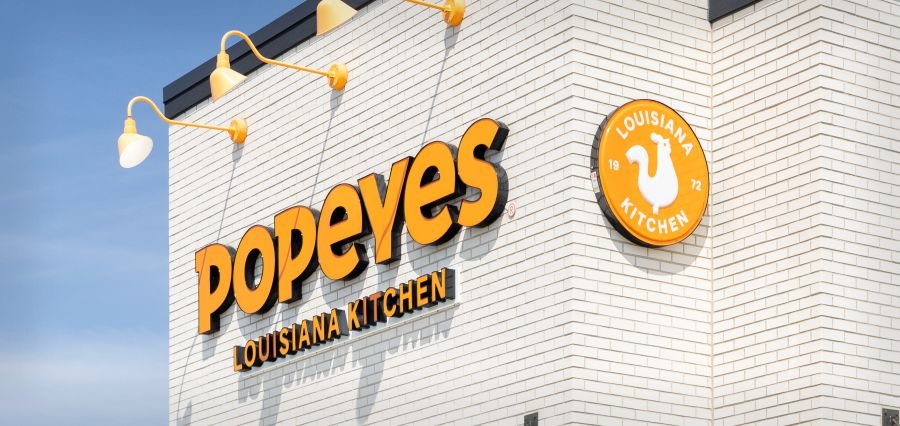Step into a dining room in Asia today, and you’re stepping into something far larger than a meal. You are tasting history, you are hearing stories, you are experiencing traditions that go back generations in time. What used to be all about plates and portions, has become a form of art and memory, heritage and innovation collide to create the future of gastronomy.
This is a new dynamic era that Asia has taken over the global platform not by copying, but by redefining. Chefs are exploring ancient recipes, rediscovering lost ingredients, and exploring older culinary techniques as contemporary works of art across the region. Restaurants are no longer mere venues for eating, but also archives of culture, laboratories of creativity, and arenas of oral and written communication between the past and the future.
At the center of this culinary renaissance is a landmark in Bangkok’s Chinatown, a restaurant that has become a beacon of progressive Asian dining. It is located in a 120-year-old building full of stories and, therefore, it has received international recognition due to the scarcity of other buildings capable of respecting tradition and being bold enough to innovate it. Every dish is a memory and revelation, reminding the diners of the origin of cuisine and also demonstrating where it could lead.
At the helm of this vision is Executive Chef and Owner Pichaya Soontornyanakij whose restaurant Potong has turned into a symbol of transformation in Asian cuisine. Through the lens of her Thai-Chinese background and trained under the influence of fine-dining restaurants worldwide, she has created a philosophy where food cannot be discussed without culture, history, and emotion. As she explains, “My vision for Potong is to continue positioning it as a place where Thai-Chinese cuisine evolves while staying deeply rooted in memory and heritage.”
Let’s dive into the culinary philosophy that makes Potong a landmark in Bangkok’s Chinatown!
Roots Shaped by Family Heritage
Chef Pichaya’s journey is inseparable from her family’s story. Born into a fifth-generation Thai-Chinese household in Bangkok’s Chinatown, she was surrounded by a legacy steeped in traditional Chinese medicine. The rituals, discipline, and deep respect for heritage formed the foundation of her worldview. Cooking became part of her life from an early age. She recalls, “I was already cooking beside my mother—tasting, learning, and feeling food, never by recipe but by instinct. That was the true beginning of my passion.”
Her mother was more than just a teacher in the kitchen; she was the inspiration behind an enduring philosophy of cooking with emotion, memory, and instinct rather than measurements. This upbringing deeply shaped how she understands food today as something more than taste, but as a medium for meaning, intention, and memory.
Early Career and Defining Moments
Formal training came later at the Culinary Institute of America in New York, a milestone that exposed her to the discipline and precision of international fine dining. Working at Jean-Georges gave her an unparalleled window into the heights of culinary artistry. But despite this immersion in global gastronomy, she always carried with her the tastes and lessons from her Thai-Chinese roots.
There were moments along the way that proved pivotal. Winning the Asia Youth Hope Cooking Competition at 21 offered validation and courage to pursue her path fully. Yet, the most profound turning point came with the creation of her own restaurant. Opening Potong in 2021 was, as she describes, “one of the hardest and most rewarding challenges of my life.” The transformation of a 120-year-old building into a five-story dining experience became both a tribute to family history and a statement of personal vision.
A Philosophy Built on Elements and Senses
The uniqueness of Potong lies in its culinary philosophy. For Chef Pichaya, food is guided by two frameworks: five elements and five senses. The elements are salt, acid, spice, the Maillard reaction, and texture. The senses include sight, sound, smell, taste, and touch. These principles work in harmony to create experiences that go beyond the plate.
She describes her approach as progressive Thai-Chinese cuisine: rooted in memory but reinterpreted with creativity and modern techniques. “Every dish begins with memory—sometimes my own, sometimes collective memory from our culture—and then evolves through modern techniques and creativity. That’s what I call progressive Thai-Chinese cuisine.”
This philosophy ensures that the cuisine remains authentic to its roots while resonating with today’s global diners. It is a delicate interplay between preservation and reinvention, where each dish serves as both an archive and a reimagining of culture.
Innovation Through Respect
For Chef Pichaya, innovation never seeks to erase tradition but to celebrate it with greater depth. Her process begins with studying the origins of dishes, how they were prepared, the choice of ingredients, and the cultural meaning embedded in them. Only then does she explore how modern methods can elevate the experience.
A striking example is her dry-aged duck. She began by understanding how duck has been prepared for generations across Thai-Chinese households. By applying aging techniques and precise roasting, she has amplified its natural flavor while maintaining its connection to tradition. “The result is not something that replaces tradition, but something that celebrates it with greater intensity,” she notes. This ethos defines the balance Potong strives for: respect for the past with a vision for the future.
Signature Creations That Tell a Story
Two dishes in particular embody the restaurant’s identity. The first, dry-aged duck, is a centerpiece of the menu. Aged for 14 days, the preparation enhances both aroma and flavor, creating depth that traditional methods could not achieve alone. Served with rice and vegetable spreads, the dish manages to be at once familiar and strikingly new.
The second is her interpretation of Pad Thai, which reflects her belief that the dish has often been misunderstood outside its true historical context. “To me, Pad Thai is one of the most misunderstood dishes in the world,” she explains. At Potong, the dish is presented with a World War II military antique box, shrimp from Nakhon Si Thammarat, and the Thai flag. It is not just food but a cultural reminder of the dish’s wartime origins as a national symbol of resilience. By pairing flavor with narrative, she delivers an experience where taste meets storytelling.
Inspiration Drawn from Memory and Science
For this chef, inspiration always begins with memory. Childhood flavors, family traditions, and scenes from the streets of Bangkok serve as a starting point. But memory is then interwoven with curiosity about science and technique. Fermentation, aging, and transformation are central to her creative process, allowing her to explore how time alters flavor.
Her approach is deliberate and personal. “At Potong, my process usually starts with a story or a feeling I want to express, and then I build the dish backwards.” She emphasizes that food must connect honestly with her identity, rather than chasing fleeting trends. Each plate is therefore not only an expression of creativity but also a bridge between her personal history and the guest’s experience.
Culinary Trends and 2025 Outlook
As Asian cuisine takes its place on the global stage, a major trend is the rising confidence of chefs in their own traditions. Rather than borrowing from Western fine dining models, they are rediscovering local ingredients and heritage practices. She observes, “Instead of borrowing from Western models, there’s a stronger focus on local heritage, native ingredients, and forgotten traditions.”
Potong embodies this spirit. By reinterpreting Thai-Chinese cuisine through progressive techniques, the restaurant proves that innovation can emerge directly from roots. It positions itself as part of a larger movement across Asia, one where heritage is not just remembered but actively reimagined.
Navigating Industry Challenges
Running a fine dining establishment in Bangkok comes with its own set of challenges. High operating costs, staffing demands, and guest expectations present constant pressures. Yet, the way to overcome them lies in clarity and consistency. As Chef Pichaya explains, “If I stay true to my philosophy, build a strong team culture, and keep pushing the boundaries of what we can do, the challenges become part of the growth rather than obstacles.”
This perspective transforms difficulties into opportunities for resilience and refinement. By holding firmly to her vision, she ensures that the restaurant maintains both financial viability and creative excellence.
Crafting Immersive Guest Experiences
Dining at Potong is designed to be transformative. Guests are guided through a five-story building, each level offering a new layer of sensory immersion. History, architecture, lighting, and even aroma are deliberately orchestrated to complement the food. “From the moment you step into the building, you’re not just eating a meal—you’re entering a space filled with layers of history, family memories, and creativity.”
This holistic design ensures that every guest walks away with more than just a taste, they experience a journey. The aim is for each visitor to feel they have encountered something unique to this space, something that could not be replicated elsewhere.
Powerful Moments of Connection
Guest feedback often serves as validation of the restaurant’s mission. One particularly touching moment came when a diner shared that a dish reminded them of something their grandmother used to make. The flavors carried them into their own memories while connecting with the chef’s heritage. Another instance involved the Kuay Jab dish, which many associate with humble street food. At Potong, guests discovered it elevated into fine dining without losing its emotional resonance. These reactions confirm the belief that food has the power to unlock unexpected memories and emotions.
Building A Strong Team Culture
Behind the scenes, leadership is central to maintaining standards. For Chef Pichaya, cultivating trust and responsibility among her staff is essential. By empowering a young team to take ownership, contribute ideas, and learn through experience, she creates an environment of growth. “Mistakes happen, but they’re part of the process,” she emphasizes, highlighting a culture where discipline and creativity coexist.
Regular training ensures precision, while open dialogue fosters innovation. Her philosophy of leadership goes beyond management; it is about inspiring the team to see themselves as contributors to a larger cultural mission.
Qualities That Define Greatness
The modern culinary world demands more than technical skill. According to Chef Pichaya, “Discipline and resilience are non-negotiable. This career is demanding, and without a strong foundation, you burn out quickly.” Beyond this, she identifies curiosity and humility as vital qualities. Curiosity drives chefs to keep experimenting, while humility grounds them in respect for ingredients, culture, and their team. A truly great chef, she believes, balances precision with empathy, and artistry with responsibility.
Advice For the Next Generation
To aspiring chefs seeking to shape Asia’s culinary future, her guidance is both pragmatic and inspiring. “My advice is: never give up, even when it feels impossible.” She encourages them to embrace their heritage as a compass, resisting the urge to imitate others. She stresses that the richness of Asia’s ingredients and traditions provides an endless source of inspiration for those willing to explore them. Most importantly, she reminds them that being a chef extends beyond the kitchen, it is about leadership, community, and responsibility.
Vision For the Future
Looking ahead, the plans for Potong are ambitious yet grounded in authenticity. A major renovation is scheduled, aimed at rethinking guest experiences while ensuring long-term sustainability. Beyond physical changes, the ecosystem is expanding with a new office, central kitchen, and creative space for the growing 90-person team.
The beverage division is also evolving with the SATO422 project, focused on producing niche Thai rice wines using varieties such as San Pa Tong sticky rice and Khao Niew Luem Pua. Meanwhile, the launch of Khao San Sek showcases sacred Thai ingredients deserving of renewed attention. These projects extend the restaurant’s impact, weaving together heritage, innovation, and community building.
Ultimately, Potong’s role is clear: to demonstrate that innovation does not mean abandoning heritage. As she articulates, “If we can inspire both chefs and diners to see Thai cuisine with fresh eyes—not as something to be adapted to global tastes, but as something that can lead the global conversation—then I feel we are moving in the right direction.”






